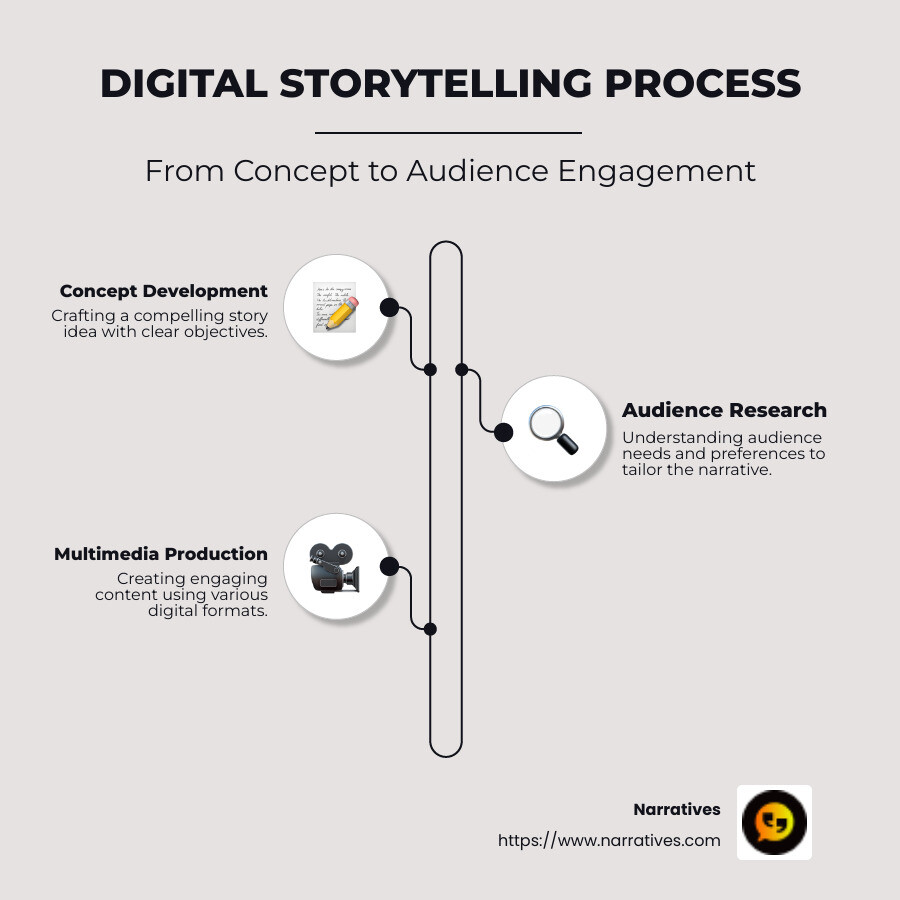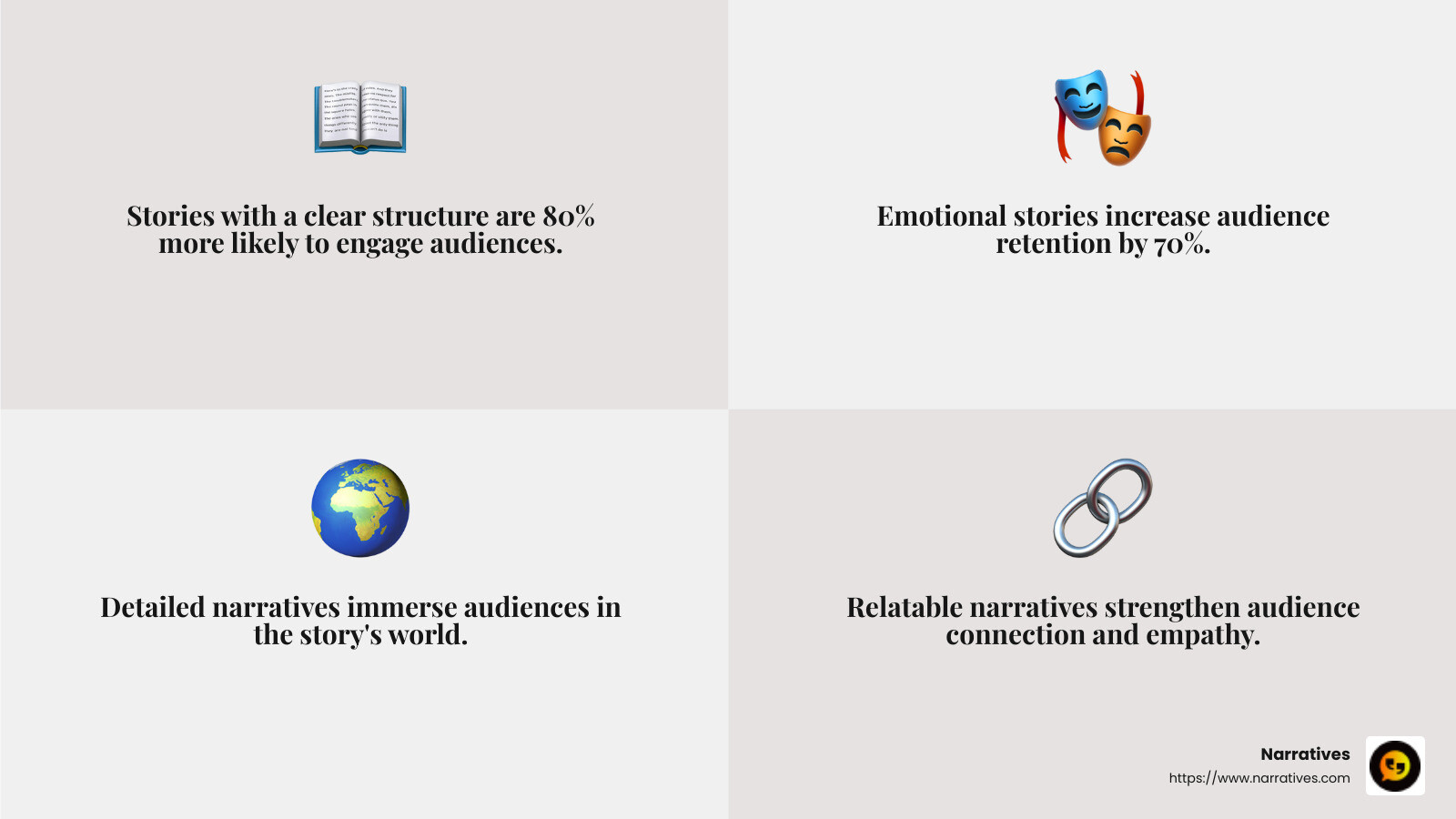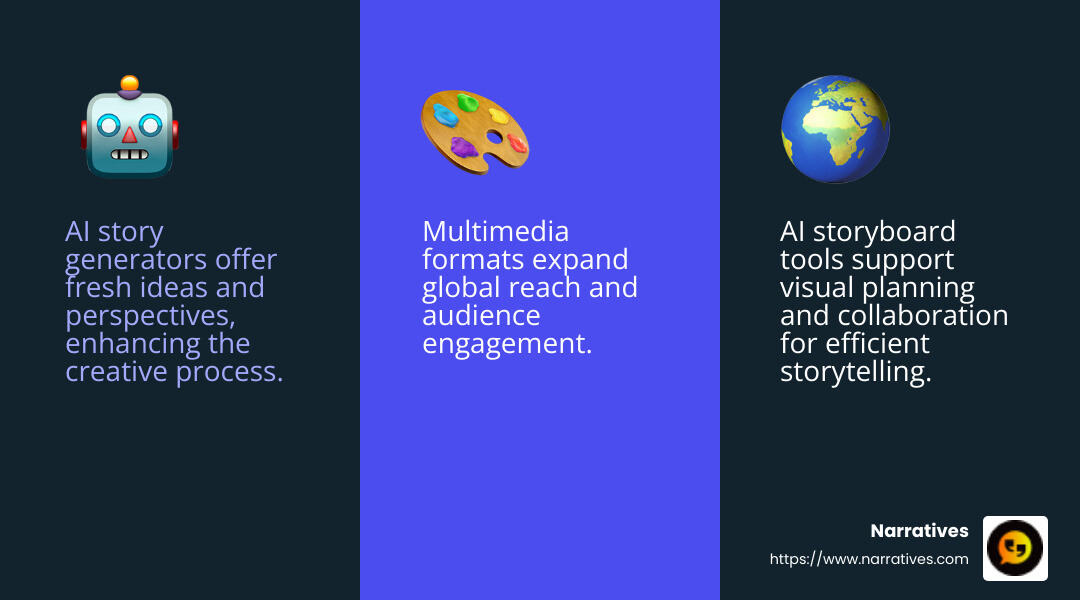Behind the Scenes: The Life of a Storytelling Creator

Storytelling creator is more than just a job title. It's a powerful role that intertwines creativity and technology to craft compelling narratives. For many organizations, especially non-profits, crafting these stories is crucial to engaging audiences and amplifying their missions. But what exactly does a storytelling creator do?
- Combines art and technology to create engaging digital content.
- Uses creative skills to evoke emotions and inspire action.
- Transforms complex messages into easily digestible stories for broad audiences.
- Drives awareness and change by crafting narratives with authenticity and impact.
Storytelling has evolved beyond traditional methods. Non-profits and story-driven brands leverage digital storytelling to resonate deeply with audiences. This involves using multimedia formats and creative tools to share stories that aren't just heard but felt.
Storytelling creators are the bridge between an idea and its audience. They are skilled in taking intricate, often technical, messages and turning them into vivid, emotionally compelling stories. For organizations with limited resources, this role is vital. It allows them to effectively communicate their values and impact, inspiring support and fostering community connections.

Storytelling creator word guide:
The Role of a Storytelling Creator
A storytelling creator plays a pivotal role in shaping how stories are told and experienced. At the heart of this role are three key elements: storytelling techniques, narrative, and emotional pull.
Storytelling Techniques
Storytelling creators use a variety of techniques to craft compelling stories. These techniques include:
Narrative Structure: Every great story has a clear beginning, middle, and end. This structure helps guide the audience through the story, making it easier to follow and understand.
Show, Don't Tell: By using vivid descriptions and details, creators can paint a picture in the audience's mind, making the story more engaging and immersive.
Suspense and Surprise: Keeping the audience on their toes with unexpected twists or unanswered questions can maintain interest and engagement.
Narrative
The narrative is the backbone of any story. It's the sequence of events and experiences that unfold within a story. A strong narrative:
Connects the Dots: It ties together the story's elements, ensuring a cohesive flow that guides the audience from start to finish.
Reflects Authenticity: The narrative should be relatable and genuine, allowing the audience to see themselves within the story.
Builds a World: Through detailed settings and character development, a narrative creates a world that the audience can lose themselves in.
Emotional Pull
Emotions are at the core of storytelling. They have the power to:
Engage Audiences: Emotional stories are more likely to resonate with audiences, making them memorable and impactful.
Inspire Action: By tapping into emotions, storytelling creators can motivate audiences to take action, whether it's supporting a cause or changing a behavior.
Foster Connections: Emotional stories can build empathy and understanding, bridging gaps between different perspectives and experiences.

A storytelling creator is a master of blending creativity with strategy. They understand that a well-told story can transcend boundaries, evoke deep emotions, and ultimately drive change. As we move further into the digital age, the role of storytelling creator becomes even more crucial in helping organizations connect with their audiences on a profound level.
Tools and Technologies for Storytelling Creators
In today's digital landscape, storytelling creators have a variety of tools and technologies at their disposal to improve their craft. These innovations help streamline the creative process and make stories more engaging.
AI Story Generator
AI story generators are revolutionizing how stories are crafted. These tools use advanced algorithms to generate plots, characters, and dialogue based on user prompts. They serve as co-creators, offering fresh ideas and perspectives that human writers might overlook.
Editpad AI Story Generator: This tool quickly writes compelling stories without requiring sign-up. It caters to both fictional and non-fictional narratives, helping creators overcome writer's block and avoid the frustration of brainstorming plots.
Prohibited Content Controls: AI story generators often include safeguards to prevent the creation of inappropriate content, ensuring a safe storytelling environment.
Storyboard AI Tool
Storyboarding is an essential step in visual storytelling, and AI tools are making it more efficient. These tools help creators map out their stories visually, organizing scenes and sequences effectively.
Visual Planning: AI-powered storyboard tools enable creators to sketch out scenes using digital templates, making it easier to visualize the flow of the story.
Collaboration: These tools often support collaboration, allowing multiple creators to work together seamlessly, enhancing the storytelling process.
Multimedia Format
The multimedia format is a powerful way to tell stories that resonate with diverse audiences. By combining text, images, audio, and video, storytelling creators can craft rich, immersive experiences.
Engagement: Multimedia stories are more likely to capture and hold the audience's attention, thanks to their dynamic nature.
Accessibility: By offering stories in various formats, creators can reach wider audiences, including those with different preferences and abilities.
Global Reach: Platforms like StoryJumper enable creators to upload and share their stories worldwide, inspiring others and fostering a global storytelling community.

These tools and technologies are changing the way stories are told, making it easier than ever for storytelling creators to craft compelling narratives that captivate and inspire audiences. As technology continues to evolve, the potential for innovation in storytelling is limitless.
How to Become a Successful Storytelling Creator
Becoming a successful storytelling creator is more than just having a way with words; it's about mastering certain skills and frameworks. Here's how you can lift your storytelling game:
Creative Bootcamp
A creative bootcamp is an intensive training program designed to sharpen your storytelling skills. These bootcamps usually cover a range of topics, from narrative structure to multimedia storytelling.
Hands-on Experience: Participants engage in practical exercises, allowing them to apply storytelling techniques in real-time. This hands-on approach helps solidify learning and boosts confidence.
Mentorship: Many bootcamps offer mentorship from seasoned storytellers. Learning from others who have walked the path can provide invaluable insights and guidance.
Storytelling Framework
A storytelling framework is a structured approach to crafting a narrative. It helps you organize your thoughts and ensure that your story has a clear beginning, middle, and end.
The Hero's Journey: This classic framework involves a hero who starts on a journey, faces challenges, and returns transformed. It's a powerful tool for creating engaging stories that resonate with audiences.
Value Stories: These focus on highlighting the unique benefits or experiences your story offers. By weaving in real-life experiences and quotes, you can create a compelling narrative that connects with your audience.
Storytelling Formula
A storytelling formula is a set of guidelines that help you craft stories consistently. It ensures that each story you create is engaging and impactful.
Emotion and Logic: Blend emotional appeal with logical structure. This combination helps capture the audience's attention and keeps them engaged throughout the story.
Problem-Solution-Result: This formula involves presenting a problem, offering a solution, and showcasing the result. It's particularly effective in case studies and business storytelling.
By participating in a creative bootcamp, utilizing a storytelling framework, and applying a storytelling formula, you can hone your skills and become a successful storytelling creator. These strategies will help you craft narratives that not only captivate but also inspire your audience.
Next, let's explore how storytelling creators can make a difference in non-profit organizations.
Storytelling Creator for Non-Profits
In non-profits, storytelling creators play a crucial role. They craft narratives that drive social impact and connect communities. Their stories are not just tales; they're powerful tools for change.
Social Impact
Non-profits aim to make the world a better place. A storytelling creator helps by sharing stories that highlight the struggles and triumphs of those they serve. These stories can raise awareness and inspire action.
Real-Life Examples: Sharing stories of individuals impacted by a non-profit’s work can motivate others to get involved. For instance, charity: water uses storytelling to show the importance of clean water access, raising millions in the process.
Emotional Connection: Stories that touch the heart are more likely to lead to donations and volunteer support. By focusing on personal narratives, storytelling creators can evoke empathy and drive change.
Community-Driven Storytelling
Community-driven storytelling involves the people a non-profit serves. It gives them a voice and allows their stories to be told authentically.
Empowerment: By letting community members share their experiences, non-profits empower them. This approach also ensures that the stories are genuine and resonate with the audience.
Collaboration: Storytelling creators collaborate with community members to ensure their stories are told accurately and respectfully. This builds trust and strengthens the bond between the organization and the community.
Purpose-Driven Organizations
Purpose-driven organizations have a mission beyond profit. They focus on making a positive impact, and storytelling is a key part of their strategy.
Mission Alignment: A storytelling creator ensures that every narrative aligns with the organization’s mission. This consistency helps reinforce the organization’s values and goals.
Inspiring Change: By sharing stories of their work and its impact, purpose-driven organizations can inspire others to join their cause. Whether it’s through videos, articles, or social media, storytelling is a powerful way to engage supporters.
Storytelling creators are essential for non-profits. They help these organizations make a difference by crafting stories that connect, inspire, and drive social change. Through community-driven storytelling and a focus on purpose, they amplify the voices of those who need to be heard.
Next, let's dive into some common questions about storytelling creators and their work.
Frequently Asked Questions about Storytelling Creators
What is the easiest way to create and publish stories?
Creating and publishing stories has never been easier, especially for young writers. Platforms like Imagine Forest offer a child-friendly environment where budding authors can craft their tales without needing to register, ensuring privacy and safety.
For those looking to publish in traditional formats, both hardcover and paperback books remain popular. These formats provide a tangible way to share your stories with the world. Many online services now allow you to upload your manuscript and design your cover, making the publishing process accessible to everyone.
How can AI improve storytelling?
AI-powered tools are revolutionizing the way stories are created. These tools can act as co-creators, offering suggestions, generating ideas, and even helping with the structure of a story. For instance, AI writing generators can assist in overcoming writer's block by providing prompts and story starters.
AI can also help in personalizing stories for different audiences, ensuring that the narrative resonates with each reader. By analyzing data and understanding preferences, AI can tailor stories that are more engaging and relevant.
What are the benefits of collaborative storytelling?
Collaborative storytelling is a powerful way to connect, collaborate, and inspire. When multiple authors come together, they bring diverse experiences and perspectives, enriching the narrative.
This approach allows for the creation of more engaging and entertaining stories. Each contributor adds their unique touch, making the story exciting and impactful. Platforms like StoryJumper foster this collaboration by bringing authors and readers together in a supportive community.
By working together, storytellers can create narratives that are not only creative but also have a wider reach and greater impact. This collaborative effort can inspire others to share their stories, creating a ripple effect of creativity and inspiration.
Next, we'll explore how storytelling creators are making a mark in non-profits.
Conclusion
The role of a storytelling creator has never been more vital, especially in the field of non-profit partnerships. At Narratives, we focus on empowering purpose-driven organizations to amplify their impact through compelling stories. By elevating underrepresented voices, we help non-profits share their missions in ways that resonate emotionally and inspire action.
Partnering with a storytelling creator allows non-profits to harness the power of narrative to build trust and increase visibility. Through high-quality video and multimedia content, these stories can highlight social impact and community-driven initiatives, capturing the attention and hearts of audiences worldwide.
Narratives sets itself apart by being the go-to digital storytelling partner for non-profits. We are committed to crafting stories that not only inform but also inspire change, helping organizations achieve their goals by connecting with their audiences on a deeper level.
Our strategy focuses on leveraging storytelling to create a ripple effect, where one powerful narrative can spark a movement. By collaborating with us, non-profits can ensure their stories are not only heard but felt, driving meaningful engagement and lasting impact.
Explore more about how we can help your organization share its story by visiting Narratives. Let us be your partner in storytelling, changing your mission into a narrative that compels and inspires.


